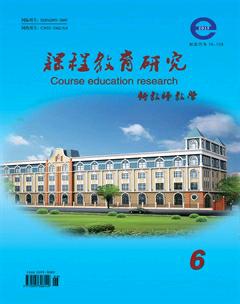A Comparative Analysis of the translation of '[Shuang—diao] Song of Great Virtue (Da—de Ge) Autumn from the Principle of Three Beauties
孙名斐

Abstract: This essay aims to compare two translated versions of the Song of Great Virtue, a Chinese Song written during the Yuan dynasty by the famous song writer Guan Hanqin using the principle of the Three Beauties.
Key words: Three Beauties; Xu Yuanchong; '[Shuang-diao] Song of Great Virtue (Da-de Ge) Autumn'
中圖分类号:H31
1. Introduction
The principle of Three Beauties - the beauty of meaning, sound and style by the famous Chinese poem translator Xu Yuanchong, has set the basic rules for Chinese poems and songs translation. The beauty of meaning means that the translated text (TT) must enable readers to enjoy the meaning of the source text (ST). The beauty of sound means the TT should keep or recreate rhythm and rhyme. The beauty of style means that the TT must enable readers to enjoy the layout of the translation. The principle sets the priority among the three. Meaning comes first, which prioritize the loyalty to meaning. It follows with the beauty of sound and lastly, the beauty of style which comes into the picture when both meaning and sound are fulfilled.
2. The source text and target texts
[双调]大德歌·秋
风飘飘,雨潇潇,便做陈抟睡不着。懊恼伤怀抱,扑簌簌泪点抛。秋蝉儿噪罢寒蛩儿叫,淅零零细雨打芭蕉。
TT1 (by the author of this paper):
TT2 (by Xu Yuanchong):
Gusts of wind whistle, showers of rain rattle
Even the Sleeping God feels the night passing slow.
Worries hurt me deep, ears in flood I weep.
Crickets chirp follows cicadas chirr,
Sorrows stir,
To hear drizzle taps banana leaves clear.
The wind soughs hour after hour, the rain falls shower by shower
Even the sleeping God cannot fall asleep.
Regret and sorrow hurt me deep,
My tears drip drop by drop,
After cicadas trill crickets chirp without stop.
It further grieves
To hear rain drizzle on banana leaves (32).
3. An comparative analysis from Three Beauties
3.1 Beauty of meaning
ST portrays a lonely woman in a windy and raining night. The first two phrases depict the endless wind and rain. TT1 and TT2 are both faithful to the meaning of ST.
"feels the night passing slow" VS "cannot fall asleep"
In the 3rd phrase, though both TTs reflect the meaning of ST, TT1 has gone extra miles to mirror the psychological status of the tossing and turning character. This echoes what Eugene A. Nida says in his Language and Culture : Contexts in Translating, that "Words may also be manipulated so as to create or reflect a particular psychological atmosphere"(10).endprint
"flood" VS "drop by drop"
TT1 uses 'flood' while TT2 uses 'drop by drop',which is closer to the expression "點抛". Therefore, TT2 has a more accurate translation for the fifth phrase.
3.2 Beauty of sound
The beauty of sound lies in rhythm and rhyme. In the ST, phase 1 and 2, 4 and 5, 6 and 7 are in rhyme (Xiao and Piao; Bao and Pao; Jiao and Jiao). In TT1, phrase 1 and 2, 4 and 5, 6 and 8 are in rhyme (whistle and rattle; deep and weep; chirr and clear). The alliterations (wind whistle; rain rattle) perfectly match the rhythmic effect generated by the ABB expressions (风潇潇,雨飘飘). In TT2, phrase 1 and 2, 4, 5 and 6, 7 and 8 are in rhyme (hour and shower; deep, drop and stop; grieves and leaves).
As for rhythm, though neither the number of rhythms of the TT1 and TT2 is the same as that of the ST, both TTs are rhythmic and preserve the beauty of sound in ST.
3.3 Beauty of style
Chinese songs usually do not have the same number of characters for each line, however, the style is still visible.Phrase 1 and 2 have the same number of characters and use the reduplicated words in ABB format. TT1 and TT2 keep the style with the same number of words for each, and TT1 keeps the words number close to that of the ST. TT2 shows a better quality by using 'hour after hour' and 'shower by shower' to represent the reduplicated words.
4. Conclusion
Both translations reflect the essence of the ST in terms of meaning, sound and style. However, TT1 may focus more on the beauty of meaning while TT2 eyes on the beauty of style.
Reference
1. Nida, Eugene A. Language and Culture: Context in Translating [M]. Shanghai: Shanghai Foreign Language Education Press, 2001.
2. Yuanchong,Xu. 100 Tang And Song Ci Poems[M]. Beijing: China Translation & Publishing Corporation,2008.
1endprint

